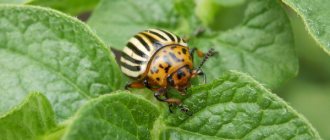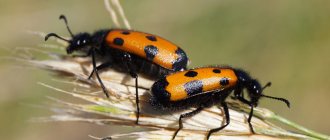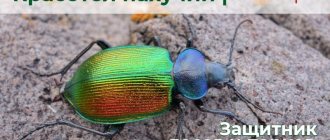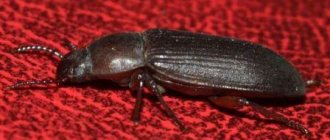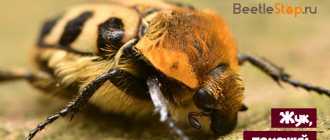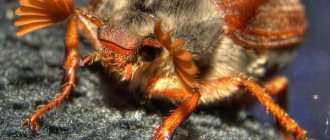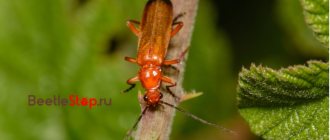It is impossible to imagine the desert without black slow beetles, somewhat reminiscent of clumsy ground beetles, leisurely crawling about their business. In case of danger, they funnyly lift their belly up, reminiscent of an ostrich hiding its head in the sand.
Steppe slow beetle
Medlars belong to darkling beetles - one of the largest families of beetles, numbering about 20 thousand species. Most of these insects are dark in color and have hard, often fused elytra. Darkling beetles live in arid steppes, semi-deserts and deserts. The genus of slowworms has about 100 species, of which 30 are found in Europe.
The steppe slugger is common in the steppes and forest-steppes of Europe, the Caucasus, the south of Western Siberia, and is common in Central Asia and Kazakhstan.
BUILDING FEATURES
The steppe slugger, like other representatives of the genus, cannot fly: it has no flying wings at all, and the elytra that usually cover them are fused and pressed to the body. They have a bizarre shape - they widen towards the middle, and at the top they are sharply narrowed and pointed. The body of the beetle is oval and compact. This structure helps to easily withstand heat and long-term drought, since the elytra reliably, like a wetsuit, cover the back of the body from water, and the air cushion between them and the upper surface of the body works like a thermos, creating insulation from external temperature. Long legs, which lift the body above the hot sand, serve the same purpose. Still, the best protection against hot sun rays is to avoid them. Slow moths are active in the dark, and during the day only in cloudy weather. In the light of the sun, they try to hide somewhere or bury themselves in the sand.
Habitat of the sand slugger
Sand sluggers live in the southern regions.
In our country, these beetles are common in the Caucasus, Central Asia, Kazakhstan and Southern Siberia. They also live everywhere in Ukraine, with the most slow-moving fish found in the Kherson, Odessa, Zaporozhye and Nikolaev regions. In addition, beetles of this species live in Mongolia and Asia Minor.
HEAD DOWN
Slow-movers cannot fly away or gallop away from the enemy and generally move very slowly. In case of danger, they take their famous “on their head” pose, by which slow beetles are easily distinguished from ground beetles and other similar beetles. They have something to scare off the enemy: at the end of the highly raised abdomen, a drop of a substance with a very unpleasant odor and pungent taste soon appears - in case someone does take it into their mouth.
Interestingly, the black onymacris darkling beetle of the South African Namib Desert adopts a similar pose, albeit for a completely different purpose. In this desert, rain does not fall for years, and almost the only source of moisture is thick fogs coming from the sea. Beetles use their bodies as a water reservoir. To do this, at dusk they climb onto the crest of the dune and raise their abdomen and hind legs upward. Precious droplets of moisture from the fog condense on their bodies and flow through special grooves on the elytra directly into the beetles’ mouths.
Fighting methods
The bait method is used to kill beetles . Heaps of wilting grass stems are placed in the fields and treated with insecticides. Insects are attracted to these natural shelters and die. For one hectare it is necessary to equip one hundred baits weighing 0.5 kilograms. One pile is treated with two to ten grams of insecticide (“Borey”, “Shar Pei”, “Break”).
Before planting, plant seeds are treated with systemic disinfectants. For example, "Taboo".
SLOWLY DEVELOPMENT
The life of slow-moving creatures is connected with the soil: there they wait out the heat and cold, there they spend the winter, and there their offspring develop. In spring and the first half of summer, at temperatures not lower than 12°C, females lay eggs to a depth of about 10 cm. The eggs are oval, with blunt ends, 2 mm long. The main condition is that the soil should not be wet, otherwise the eggs and larvae will die. One female can lay up to 300 eggs per season. After 10-12 days, yellow larvae appear from them, elongated, with hard covers. Outwardly, they look like wireworms of click beetles, that is, they resemble wire, which is why they are called false wireworms. They differ from wireworms by their convex, clearly visible head and strongly developed front legs. The larvae feed until autumn, and then burrow deeper into the soil, make themselves a comfortable cradle cave and overwinter. As a rule, in the summer of next year they already pupate (also in the ground, in a cradle). After 20 days, adult beetles emerge. The entire journey from egg to adult slugger takes about 15 months. The beetles will begin to reproduce only next summer. They overwinter, emerge in the spring and lay eggs, often overwinter again, and breed again the following summer. The average lifespan of slow moths in nature is about 2 years. Amateur entomologists successfully keep and breed them in captivity, where, under suitable conditions, they can live 3-4 years, or even longer.
Morphological description of the species
The sand lance (Opatrum sabulosum) belongs to the genus Opatrum, in the darkling beetle family. The body of the imago is oval with parallel sides, length 7-10 mm. The soil crust covering the body gives it a grayish or black tint. The clypeus hides the oral organs; in the front part it has a semicircular notch through which the upper lip is visible. Convex cheeks slightly cover the surface of the eyes. The clypeus and cheeks are covered with punctures. The eyes are convex with a deeply notched anterior margin. The maxillary palps do not have extensions.
The forehead is covered with large dots of various shapes. The growth of small bristles is directed backwards. The antennae are 11-segmented, the last segment has a conical apex. The antennae are short, their size does not exceed 1/3 of the length of the pronotum.
The pronotum is wider than it is long, the cover is granular. Two smooth tubercles are visible among the punctures. The sides of the pronotum are arched, protruding as sides. The front part is notched. The tops of the protruding front and rear corners are smoothed. Hard elytra cover longitudinal rows of large growths. The hind wings are reduced. The fore femora are triangular, convex, with short setae. Middle and rear straight. Tibia with spines pointing outward.
Information. Sexual dimorphism of beetles: the male's fore legs are not widened, and they lack a hair brush.
Morphology of the sand slugger
The adult size is from 7 to 10 mm, the body shape is oval, slightly convex. The color is black or gray-brown due to soil particles that cover the entire body of the beetle. The front part has a semicircular deep notch.
The elytra are decorated with longitudinal rows of large humps; hind wings are missing. The length of the larva is up to 18 mm, the shape is flat-cylindrical. The color of the beetle varies from dark gray to brown-yellow.
The head and prothoracic tergite are dark; The integument of the body is matte, the lower part of the body is lighter colored. The clypeus and labrum have two club-shaped spines in the middle.
Sandy slow-worm - Opatrum sabulosum
Sandy slow-worm - Opatrum sabulosum
Symptoms of damage to grain crops by sandworm
Opatrum sabulosum
The sand borer harms cereal plants by eating away areas of the leaf blade. Beetles can also damage germinating and swollen seeds of oats, wheat, barley, melons and other crops.
Adult sand sleds stop harming plants in June and July - at this time the larvae begin to grow and develop. Sandworm larvae eat up pieces in the underground parts of plants, thus causing serious damage to many crops.
Protective measures against the sand slugger
In the fight against the sand slugger, the method of poisoned baits is used. This method is effective due to the beetle’s ability to feed on wilted plants and due to their tendency to accumulate under shelters. For this purpose, about 100 piles of green food treated with insecticides are laid out per 1 hectare. For one bait, it is enough to use 2-10 g of any known insecticide.
You can also spray crops with the following preparations:
- Aktara 240 k.s. – application rate is 0.09 l/ha, spraying is carried out during the growing season, frequency of treatments is 2.
Medlyak-broadcaster
Blaps mortisaga (L.) Status .
0 (RE) - view. probably extinct in the region. It is protected in a number of European countries. Short description . Large darkling beetle with an elongated body (21-31 mm). The color is black, matte. The elytra are convex with an apical process, short in the female and long in the male. The antennae are long, their apices usually extend beyond the base of the pronotum. Medlyak-broadcaster is the only representative of the family in the Leningrad region. The larva is cylindrical, slightly flattened. yellow-brown. The front legs are digging. The last segment of the body is elongated into a sharp cone-shaped outgrowth curved upward with a regular row of small spines. The bristles on the upper surface of the upper lip form a regular row.
Spreading . European look. The northern border of the range in Russia runs through the Leningrad and Yaroslavl regions. At the end of the 19th and beginning of the 20th centuries, more than two dozen beetles were collected in St. Petersburg, including individuals bred from larvae.
Ecology . Even in the southern regions, in the territory of its permanent habitat, the broadcaster prefers to settle in sheds and basements. practically absent in natural biotopes. The beetles are very slow, usually stay in shelters or in the shade: in case of danger they emit a strong unpleasant odor. The larvae live in the upper layers of the soil or in plant debris. Both larvae and adult beetles live for several years. Both are phytosaprophages, feeding on plant debris, including human food supplies. It is no coincidence that the last known find in December 1907 was made in a bakery. The disappearance of the species is definitely associated with the disappearance at that time of food stores and any heated housing with earthen floors. It was precisely these conditions that previously ensured the maintenance of the synanthropic population of this large and spectacular beetle.
Limiting factors . The disappearance of necessary conditions of existence. The St. Petersburg population can be considered irretrievably lost; the likelihood of new habitats appearing is low.
Security measures . May be offered if specific habitats of the species are discovered.
Information sources . Ivanov. Krivokhatsky. 1999: Medvedev. G. S. Medvedev, V. Krivokhatsky
Status . O(RE). Regionally extinct. Protected in some European countries.
Description . A large tenebrionid with an elongated body of 21 31 mm. fhe coloring is black and dull. The elytrae are convex with an apical process that is short in the female and long in the male. The antennae are long, their ends usually reaching beyond the pronotum base. The cellar beetle is the only representative of the genus in the Leningrad Region. The larva is cylindrical, slightly flattened and yellow-brown. The fore legs are fossorial. The last segment is extended into a sharp conical, up-curved projection, with a regular row of small setae. The chaetae on the upper surface of the labrum form a regular row.
Distribution . European species. The northern limit of the distribution area in Russia passes across the Leningrad and Yaroslavl regions. At the end of the 19'*' beginning of the 20″' centuries, more than twenty beetles were collected in St. Petersburg. including specimens reared from larvae.
Ecology . Even in southern areas, within the territory of its permanent habitation, the cellar beetle prefers to live in sheds and cellars, being practically absent in natural biotopes. The beetles are very sluggish, usually stay ing in shelters or in shade: in the event of danger they emit a sharp unpleasant smell. The larvae live in the upper layers of the soil or in plant litter. Both larvae and adults live a few years. They are both pliytos- aprophagous. feeding on vegetative remains, including human food stores. It's no coincidence that the last known find, made in December. 1907. was in a bakery. The extinction of the species is definitely associated with the disappearance. around that lime, of food shops and heated dwellings with soil floors. Such conditions maintained the synanthropic population of this large and spectacular beetle.
Limiting factors . Disappearance of the necessary natural conditions. The St. Petersburg population can be considered irrevocably lost: the probability of the appearance of new habitats is low.
Conservation measures . Conservation measures may be recommended if species localities are found in the Leningrad Region.
Sources of information . Ivanov. Krivokhatsky. 1999: Medvedev. 1968. GS Medvedev I! A. Krivokhatsky
AOF | 11/30/2018 08:38:50




